Garment steamers: description, selection and use

Despite the fact that a garment steamer is a relatively new thing, it has been on the market for enough time to compete with a regular iron for ironing clothes. The first presented options, which were sold in TV shops, did not inspire much confidence in people at all, and those who bought it after several uses sent the purchase to gather dust in the closet. In use, these units were not more convenient than their predecessors - irons: they were bulky and awkward. Customers were attracted by the idea of better quality ironed clothes.
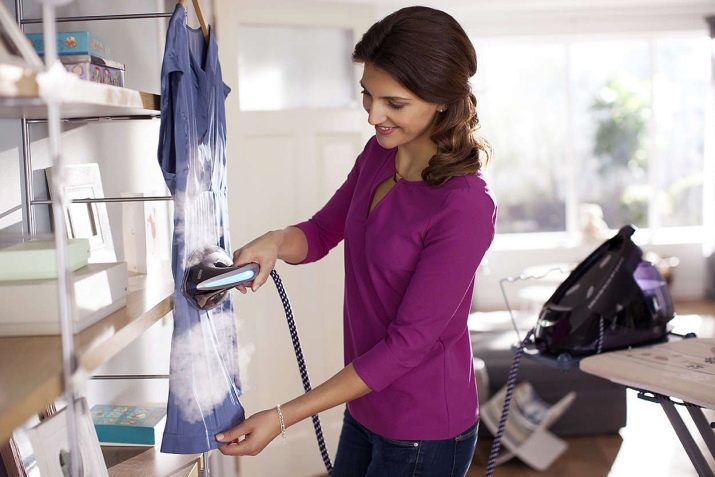
But progress does not stand still, and now devices for vertical ironing of clothes have shown all their advantages: they have become more compact, cheaper and more convenient to use. The market offers a wide range and can offer products suitable for everyone that can be used at home. Prior to this, steamers and steam cleaners were purely professional equipment that was used in factories or dry cleaners.
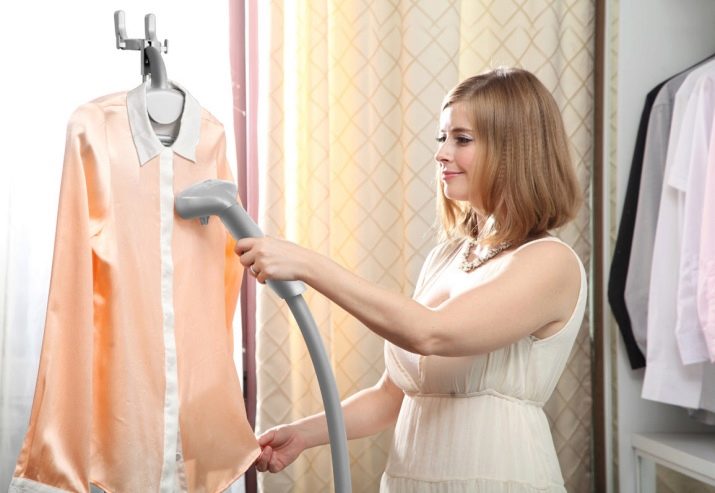
Features, pros and cons
First of all, you need to decide what you need a garment steamer for. The direct purpose of the device in everyday life is ironing clothes. But his possibilities do not end there.
- To begin with, it is worth highlighting that the steamer is a great option for clothes that are difficult to iron with a regular iron. As a rule, these are clothes with lace, rhinestones, rivets and similar details that make it difficult for the iron to run on the fabric.
- Since the steam is supplied under high pressure, the steamer can easily handle jackets and coats that a regular iron would never do.
- It will be indispensable if you need to iron a wedding or any other dress with a lot of decorative elements.
- It will steam off expensive patterned curtains and bring any, even the most delicate, blouse into perfect condition without damaging it.
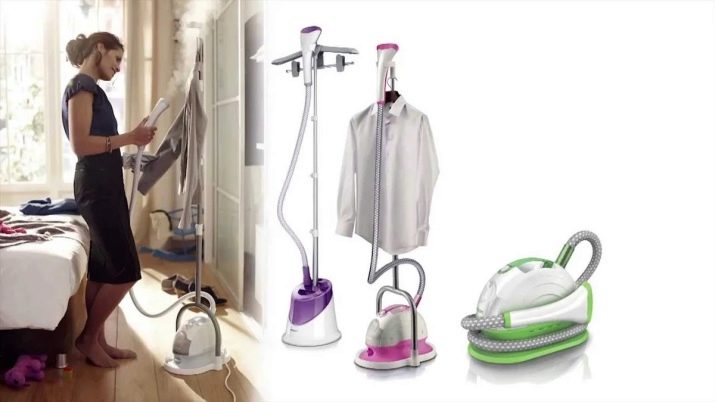
The next plus is the ability to iron the curtains right on the spot. This will significantly speed up and simplify the procedure, in contrast to working with an iron, where you need to remove curtains to iron them, and ironing such an area on an ironing board is not an easy job. The steamers are suitable for ironing any type of fabric, they will never burn through it, since they do not have direct contact with it, which also distinguishes it from an iron.
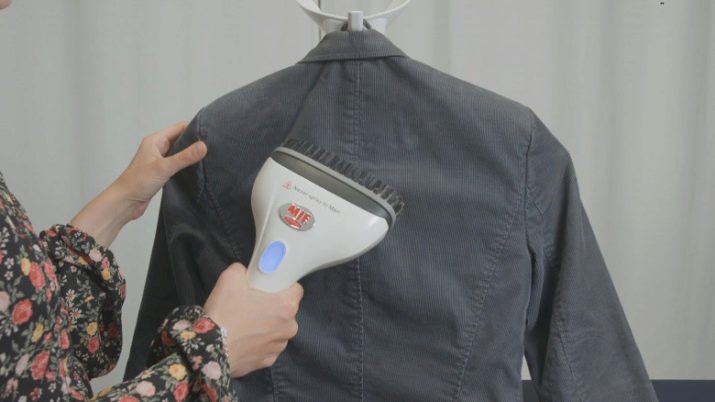
But the steamer cannot fully replace the iron. For example, he does not have the ability to iron the trousers correctly, and the arrows on them cannot be made with a steamer. Not suitable for using any sleeve collar ironing techniques or the like.
In addition to ironing, the steamer has the ability to remove unpleasant odors from all types of fabrics. This opportunity will find its application in different everyday situations, for example, when ironing the same curtains and bed linen. Given the fact that some steamers have high steam pressures, they can handle removing odors from thick blankets, pillows, and even mattresses. For this purpose, it is also often used on upholstered furniture, which is not possible to wash.
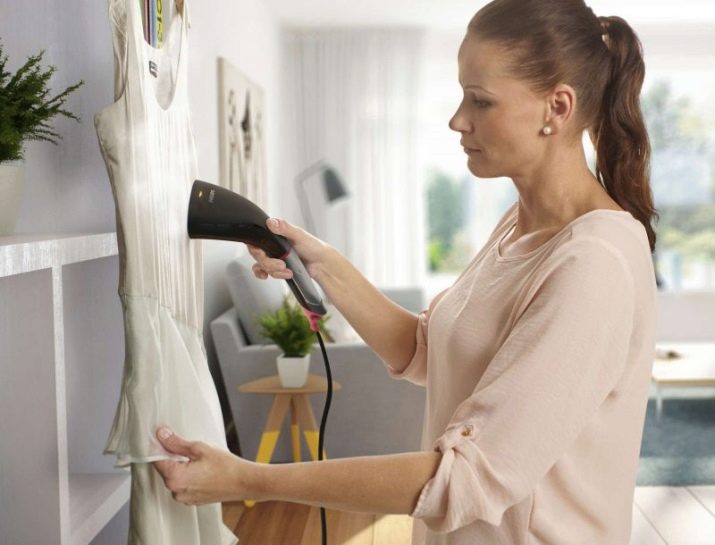
Judging by the description, ironing things with such an apparatus in practice turns out to be very convenient, quick and effective, in many ways even faster than using an iron. Odor removal is a nice bonus. Although the above is completely true, not all steamers can match the description.
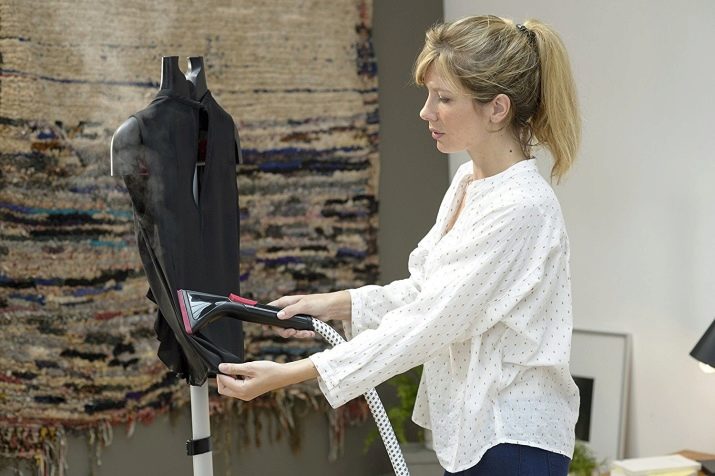
The functionality of budget models can differ significantly from expensive ones. For example, in cheap models, the steam jet is not so strong, which does not allow them to adequately cope with coarse fabric. Also, many budget models do not have the ability to work horizontally or do it poorly. Therefore, if you take a budget model, then you can forget about removing odors from upholstered furniture or mattresses. You will also not be able to iron the bedding. Not all models have horizontal mode - this is usually indicated on the packaging.
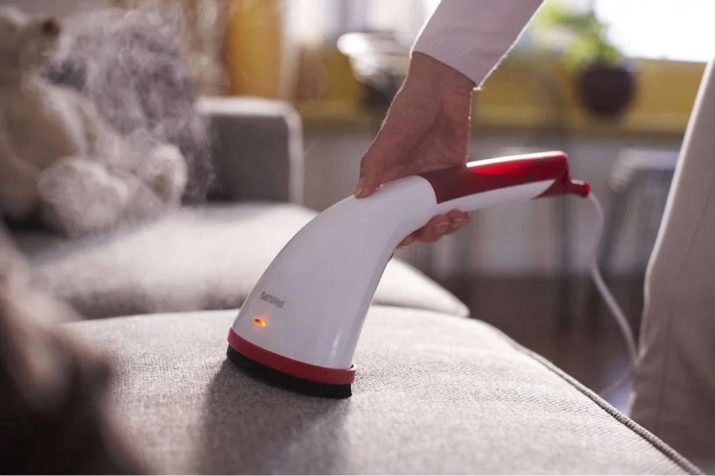
Another marketing ploy is to remove stains with a steamer. Many manufacturers talk about the presence of this feature in their products. But in reality, this is not completely true, since most of the devices work on the principle of gravity. Even expensive models with confident and powerful steam cannot cope with tough stains on clothes. As a rule, only dry cleaning or more specialized equipment can handle them.
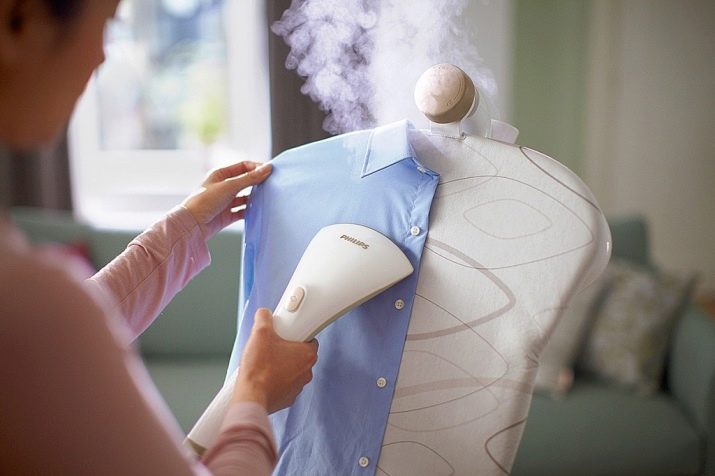
Despite the disadvantages described, the steamer remains an excellent device, the choice of which should be carefully considered, as well as learn how to use it correctly. Often the purchase of a steamer does not live up to expectations: you should not perceive it as a complete replacement for the iron - it should be regarded as an additional tool in everyday life.
How does the device work?
The steamer is quite simple in its structure. It consists of a vessel with water, a heating element, a heat-resistant hose and a handle with attachments. Roughly speaking, it is designed like a kettle that boils continuously. It also has a retractable clothes holder, on which a hanger or hooks are fixed. The length of the hose is not very long, and therefore it is not very comfortable to steam the curtains, therefore, most of the devices are equipped with a carrying handle. As a rule, steamers are lightweight, so they can be easily carried from one place to another, or even held in hand for a long time.
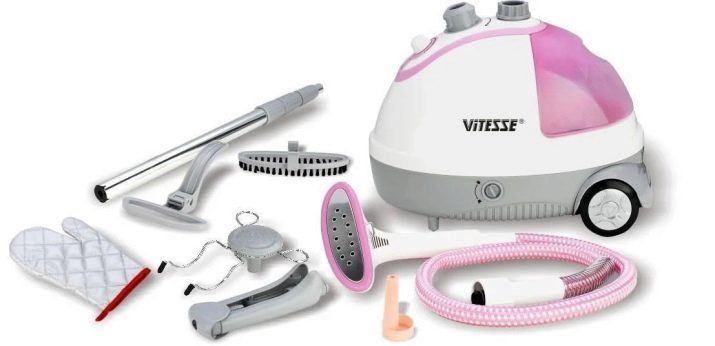
The heater brings the water to a boil, converting it into steam, which is fed through a hose to the holder and forms a jet of steam. The jet is regulated by interchangeable nozzles, which allows you to steam tissues of different densities. Steam straightens the fabric fibers and smoothes the fabric. Also, by means of steam treatment, unpleasant odors are removed, which often finds its use in everyday life, as mentioned earlier.

The steamer device is divided into two types. The first includes devices with a gravity steam supply system. When water boils, steam is released through the hose under its own pressure. Such devices, as a rule, are cheaper, but their use is limited: they do not cope well with dense fabric, and horizontal use is out of the question.
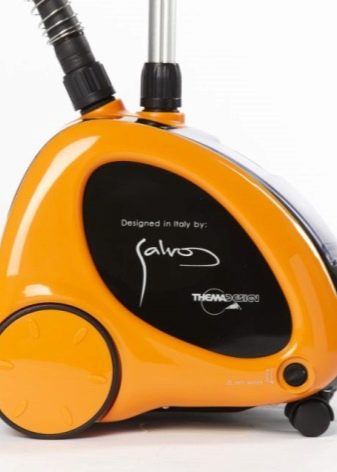
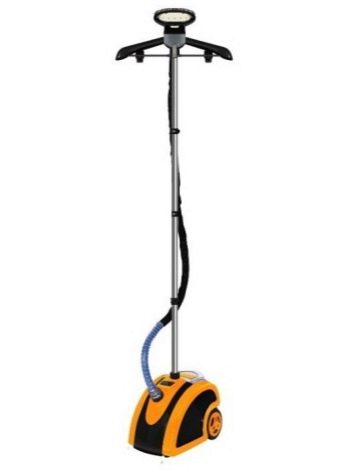
The second type of steamer has a special valve that regulates the steam supply. It opens only when the pressure reaches a certain value. Such devices, as a rule, are more expensive, but they also do their job much better. They easily smooth thick fabrics and cope with bedding. Unfortunately, not all gravity steamers can boast of a horizontal mode of operation.
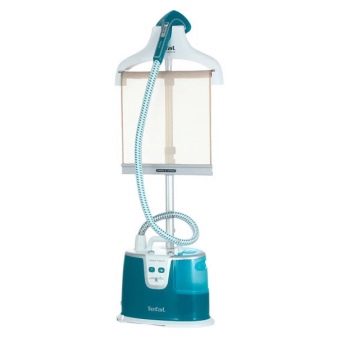

There are models with different characteristics. They differ in tank size, power and pressure. The pressure usually varies between 3.5-5 bar. The flow rate is also important, it is usually indicated in milliliters per minute. The higher this indicator, the more efficient the steamer will work. On average, this figure reaches 40-50 ml / hour. Also, not all devices are equipped with water filters, so some of them require the use of distilled liquid. Models with filters do not differ much in price, so it is better not to save money, but to take the option with such a cleaner. So the use will be much more convenient: water can be drawn directly from the tap.
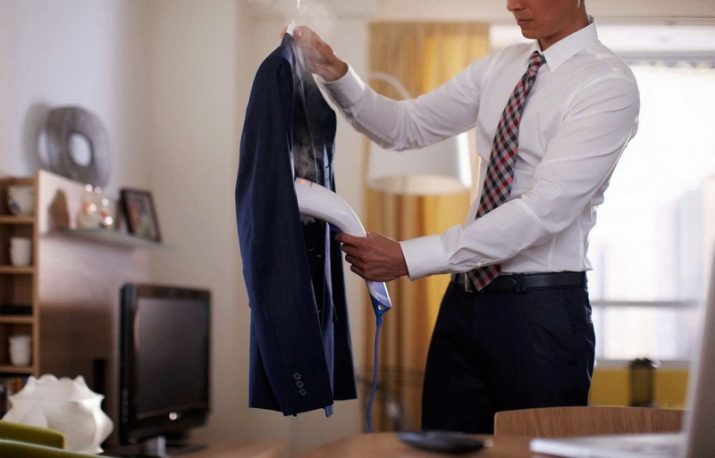
Cheap models differ from expensive ones in the ability to regulate the steam supply. The cheaper ones usually have one mode, and they do not cope with different types of fabrics. They are mainly intended for ironing casual clothes and loose curtains.
Which is better: a steamer or an iron?
Answering this question, we can say that it is wrong to compare these two devices with each other. One is not able to completely replace the other and vice versa. An iron is essential in every home. The steamer should be used as a supplement.
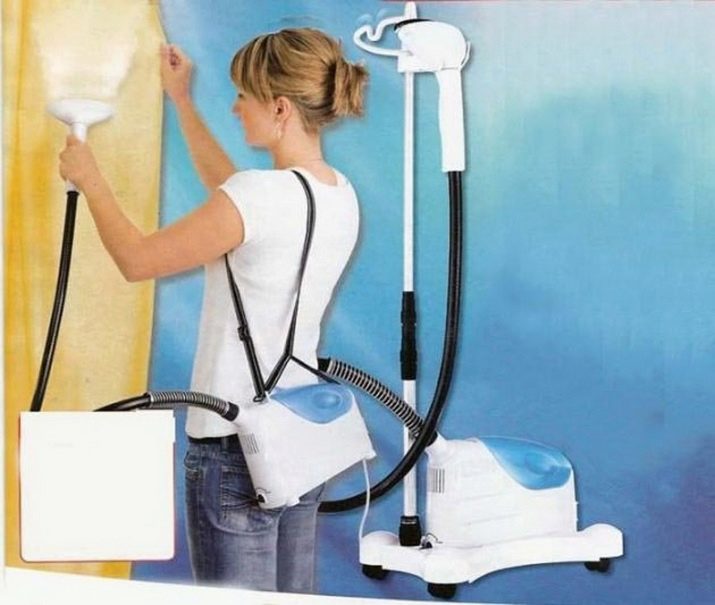
If you do not see the need for a steam generator, it is definitely worth opting for an iron. It is a compact, easy-to-use device that has been used for ironing clothes for generations. Currently, the market offers a large selection of irons. Manufacturers of household appliances are introducing new technologies into them, improving the quality every year. The combination of different alloys, new heating systems and coatings never ceases to amaze with the variety.

An ordinary iron of the middle price category has a wide range of settings, where there is everything you need in everyday life. With an iron with a steam generator, you can easily steam the fabric during ironing, make arrows on your trousers, align collars, iron curtains, bed linen and much more. In pair with the iron, you need to purchase an ironing board, the range of which is also quite large. On the other hand, it can be attributed to unnecessary costs. In the case of a steamer, there is no need to make such expenses - it is fully equipped.

First of all, the devices are distinguished by cost. If a good iron can be bought without spending even $ 100, then a high-quality steamer will cost a tidy sum, because a cheap device is, as a rule, a waste of money: it will cope with the same tasks for which an iron is perfect, and the point of buying it will be reduced to a minimum. Despite the speed of operation, such devices require more frequent and longer maintenance.As a rule, cheap models can be covered with scale and other sediments. In addition, more storage space is required for such a steamer.

If you had to put yourself before a choice, for example, for financial reasons, the first thing to do is to choose an iron. During the operation of the device, it will be clear how necessary a steamer is, since it should be purchased for a specific purpose for a specific use. Steamers are mainly used for ironing difficult fabrics, and purchasing will be more specialized than purchasing an iron.
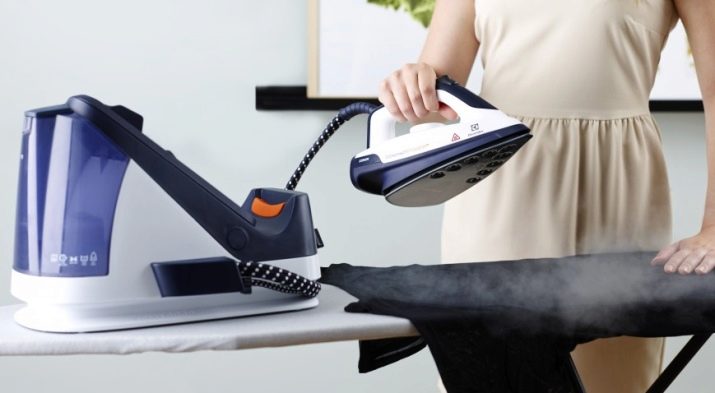
How is it different from a steam cleaner?
Despite the similar principle of operation, a steamer is very different from a steam cleaner. The steamer was invented with the aim of straightening the fibers of the fabric when ironing clothes. As a rule, they do not cope with the task of cleaning fabrics from stains and dirt. The steamer has a gravity steam supply system. Even with a pressure regulating valve, it still continues to operate by gravity. The steam cleaner has a built-in compressor. Steam is supplied under high pressure, providing deep cleaning and disinfection of all knitted surfaces. It copes much better with cleaning upholstered furniture, as well as working in a horizontal mode.
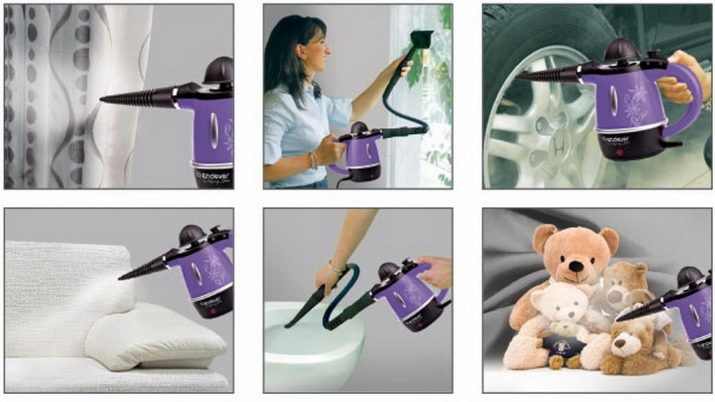
The steam cleaner is a specialized technique for deep cleaning of surfaces, it has a large selection of attachments and accessories, in contrast to the steamer, which, as a rule, is content with a meager set from the box. More often, such devices are attributed to professional equipment. In turn, the steamer can be classified as a household steamer. The difference between them is great, starting from the design and ending with the purpose. You should not consider these devices as an alternative to each other: the device of a steam cleaner is much more complicated, and its cost is strikingly higher than that of a steamer.
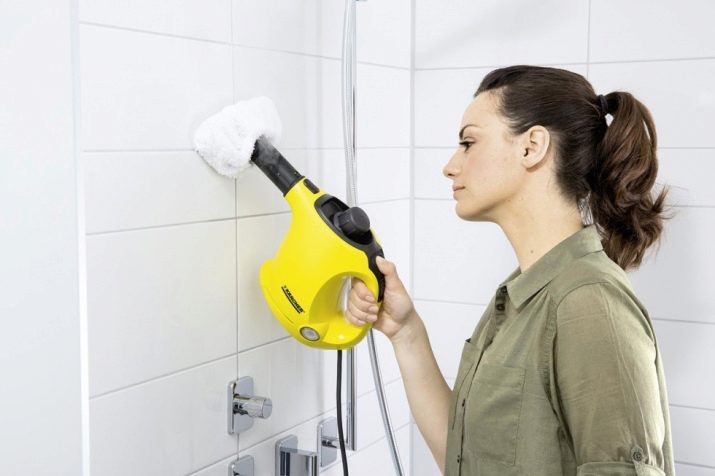
Considering them as options, it is worth deciding on the purpose of use: a steamer is better for ironing curtains and clothes, a steam cleaner is better for disinfecting and cleaning furniture. There are steam cleaners with steaming capability, as well as steamers with a steam cleaning function. But both options tend to be quite expensive.
Views
Perhaps the most convenient type of steamer is manual or portable. It has several advantages. First of all, it is its compactness. Its work does not require the presence of an electrical network, and unlike an iron, you can take it with you on a trip, therefore it is also called a travel iron. It is lightweight even with a full tank of water. Of the minuses, we can note the low efficiency. Since it has a small tank, it is enough for 2-4 items - it will be inconvenient for home use. In addition, a handheld steamer will not cope with thick fabrics, since its power is low.
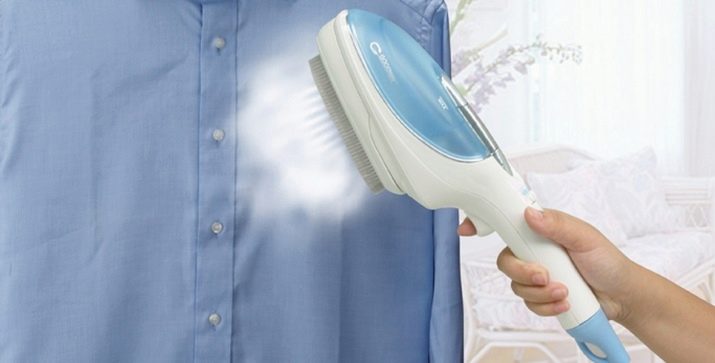
Vertical steamers are good at home and in everyday use. The entire cabinet can be ironed on one tank. Their power is slightly higher than that of manual ones, so it will be easier for them to cope with dense fabric. These steamers are usually mains powered. Cheap machines of this type have basically one mode, they cope with ironing clothes and curtains with a bang, this is where their capabilities end. More expensive models of vertical steamers have more power, which allows you to cope with the same tasks faster and more efficiently. Many of them have settings and regulation of the steam supply, as well as the ability to add water directly during operation.
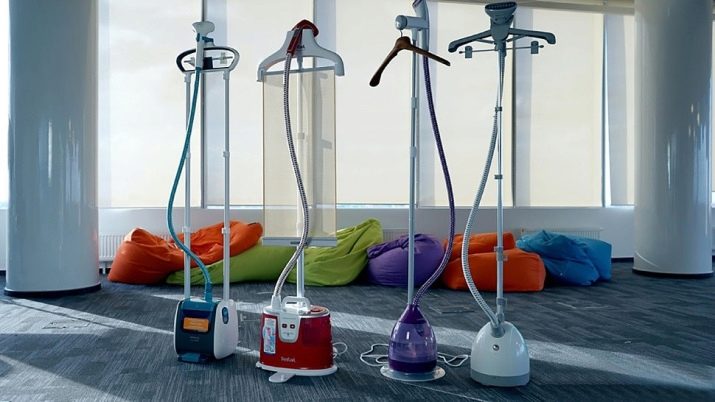
The steamer-steam cleaner will be an excellent choice for ironing and cleaning not only clothes, but the whole house. It is versatile and is able to clean a carpet or sofa, after a complete disinfection, ironing bed linen or a shirt will not be difficult for him either. As a rule, such models work both vertically and horizontally, which significantly increases work efficiency.
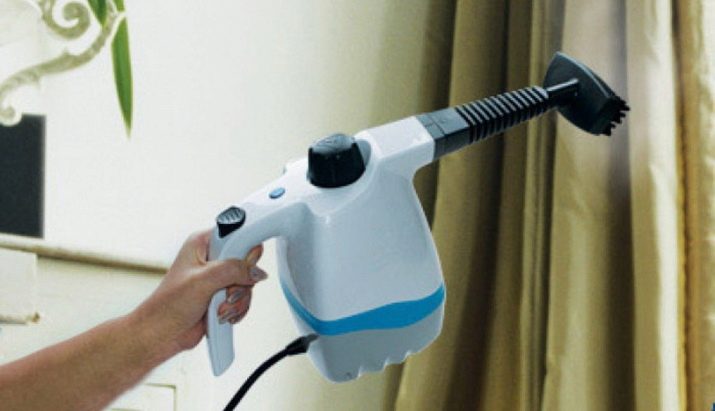
All these steamers can be classified as household appliances for home use. Besides them, there are professional steamers. They are large and therefore hold more liquid. The power of such devices is much higher. Typically, they are used in industrial locations, dry cleaners or manufacturing. Not intended for home use, as they require complex maintenance and take up a lot of space. In addition, their cost is too high for domestic needs.
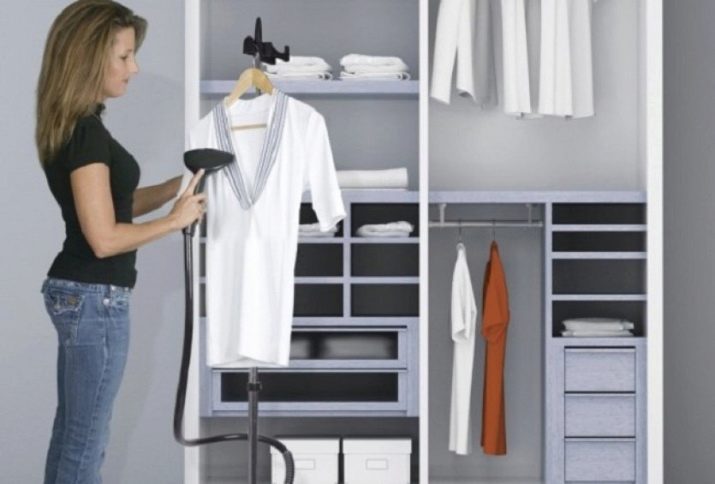
How to choose?
If you are thinking about buying a steamer, the first step is to assess your budget. There is a wide range of products on the market and prices vary greatly. It is also important to decide what exactly the device will be used for. Based on this, several of their main purposes can be distinguished. The first is, of course, the choice of a travel steamer. When you need to iron on the go, but you can't take an iron with you, a handheld steamer is a great solution. It is worth looking at the autonomy of work, the dimensions of the device and its power. For a home, you should not choose such a model - it will be extremely ineffective.
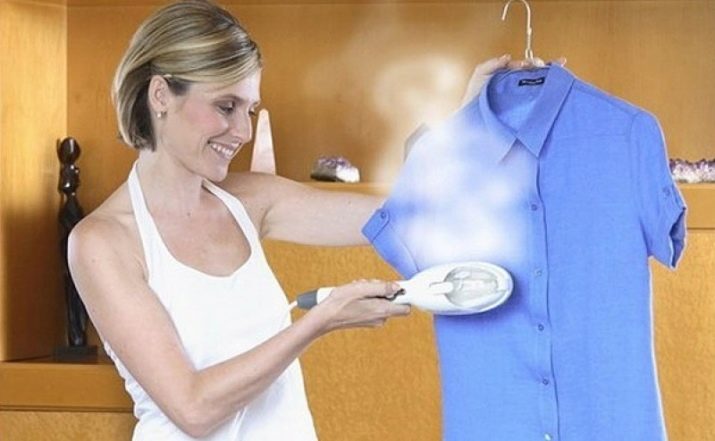
Floor standing steamers are mainly intended for home use. But, as mentioned above, not all types of devices are suitable for your needs. Vertical steamers are not suitable for laundry. Like conventional floor-standing appliances, they will not be able to remove odors and stains, and it will also be difficult for them to cope with dense fabric. They are perfect as an alternative or addition to an iron. For home use, the best option would be to choose a floor standing steamer with horizontal operation.
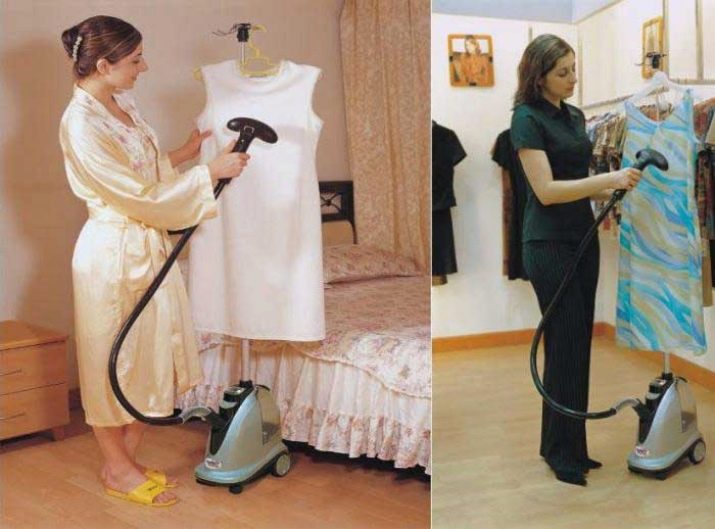
For more specialized use, steamer-steam cleaners are suitable. They can be used not only for ironing, but also for cleaning. Otherwise, they almost do not differ from floor appliances.
There is a large selection of devices for professional activities. Such devices should be taken with the expectation of self-sufficiency. There can be a large number of purchase options, for example, if you are professionally engaged in tailoring to order. Specialized steamers are also suitable for dry cleaning clothes, carpets, furniture and more. In this case, a powerful professional device will be very useful. To make the right choice, you should carefully study the issue. It will be very useful to read customer reviews. In addition, many will be helped by the advice of professionals in this matter. There are many comparisons and reviews of different models on the Internet. They will be very helpful in choosing between specific options.
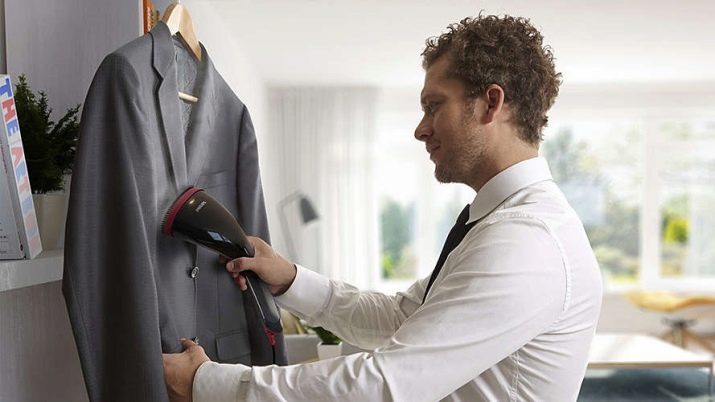
How to use it correctly?
Each device has its own instruction manual, but the rules of use are approximately the same for all. The device requires filling with water to the specified values. Once started, the steamer will notify you when it is ready to use. Also, a special indicator will tell you when you need to add water. Most models are intended for vertical use only - they are highly discouraged for horizontal use. If you do not follow the safety precautions when using the device, you can easily get burned. As a rule, streams of steam leave impressive skin lesions.
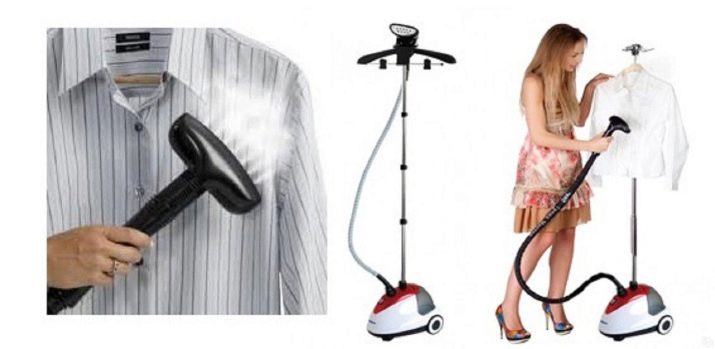
Floor standing steamers have a retractable hanger holder. It acts as a counterpart to an ironing board. This is a standard feature found on most devices. Ironing in such conditions is quick and very convenient. Since the standard hose is quite short and only fits the length of the clothes holder, iron the curtains with the steamer while holding the boiler in your hand. As a rule, they are lightweight. It is undesirable to place it on chairs or tables during work, as it can be easily turned over, as a result of which it can break and cause unpleasant injuries.
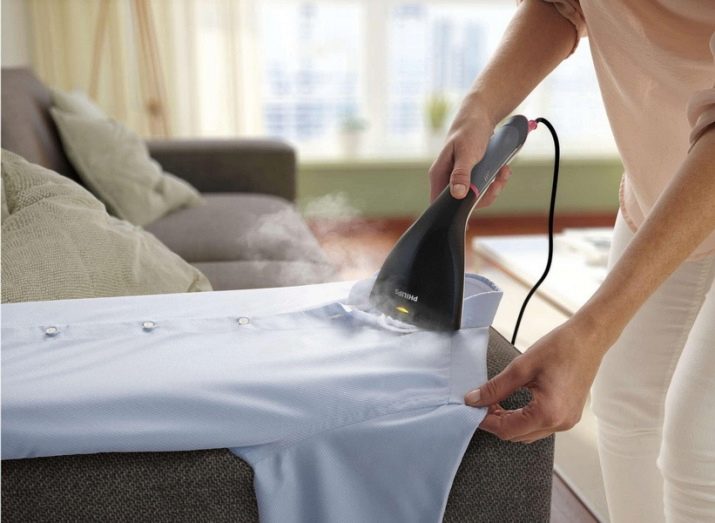
The steamer can be used to iron bed linen after hanging it up. The device with a horizontal mode of operation can be used to iron linen directly on the bed. This will freshen up your bed by ironing the pillows, mattress, and blanket. It is also worth noting the following point: since the steamer processes the fabric with steam, things will not be ready for use immediately after ironing - you will have to wait a while for your shirt to dry before putting it on. This is also a disadvantage. The iron, in turn, although it takes a little more time to iron, brings things to readiness immediately.
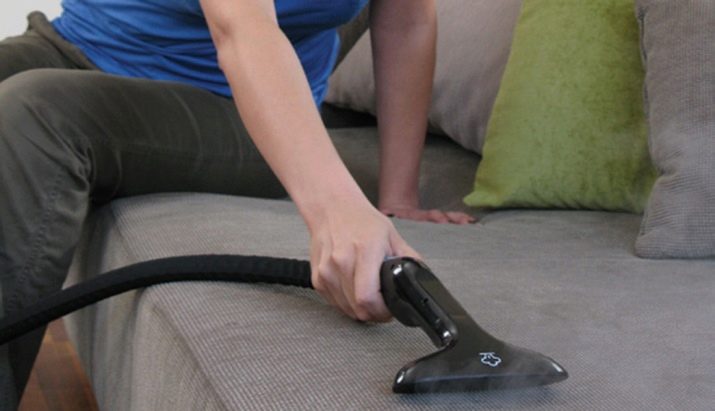
Ironing curtains also has its own nuances. They must be ironed strictly from top to bottom in horizontal stripes. Under the influence of their own weight, the curtains will stretch, smoothing the surface. You can also pull the curtains yourself while ironing. The important thing is to stretch the fabric. Steamers are not always suitable for processing fur. Make sure that the device is designed for such material, otherwise the fur can be damaged. Ironing large canvases will be more convenient on a dryer or on a rope.
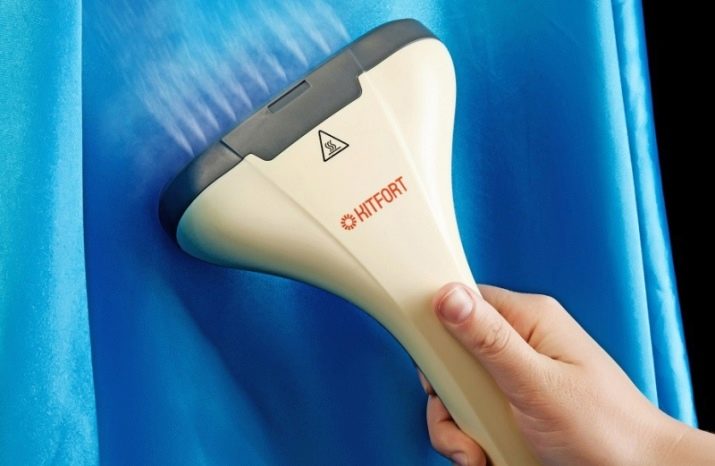
Care
With regular use, steamers can become highly contaminated by many factors, such as using inadequate water quality. Tap water is usually very hard and has a lot of impurities. Also, the reason for contamination can be low-quality materials of the body of the equipment itself. Problems such as limescale, unpleasant odors or splashes of dirty water from the machine can be avoided by taking preventive measures. It is recommended to clean the device 1-2 times a month with regular use.
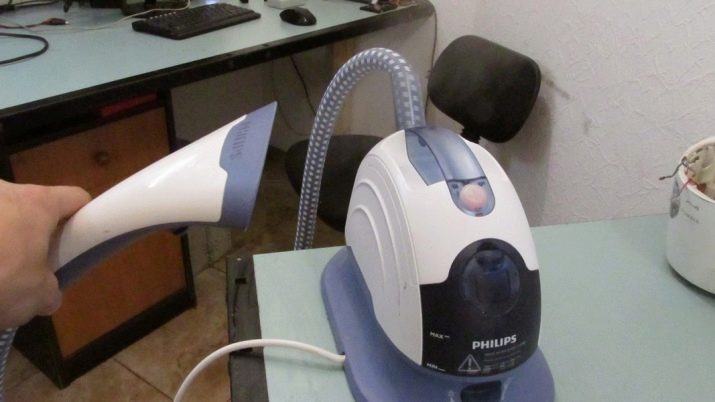
You can descale your steamer at home. There are special solutions for this. According to the manufacturers, it is enough to dilute them with water and pour into the apparatus, but such measures are only suitable for prevention. In fact, when faced with a serious scale problem, mechanical cleaning is necessary. To carry out such procedures, it is required to completely disassemble the apparatus. It is advisable to use a brush for cleaning.

Also, for descaling and preventive cleaning of the device, you can use folk remedies. The most popular way is to use a mixture of vinegar and citric acid. This method is quite effective in the fight against scale. But sometimes you can face the difficulty of removing the smell of vinegar from the container of the apparatus. You need to know exactly which water is not right for your model. Pouring ordinary tap water can ruin the device. It is recommended to carefully read the instructions and use in strict accordance with it.
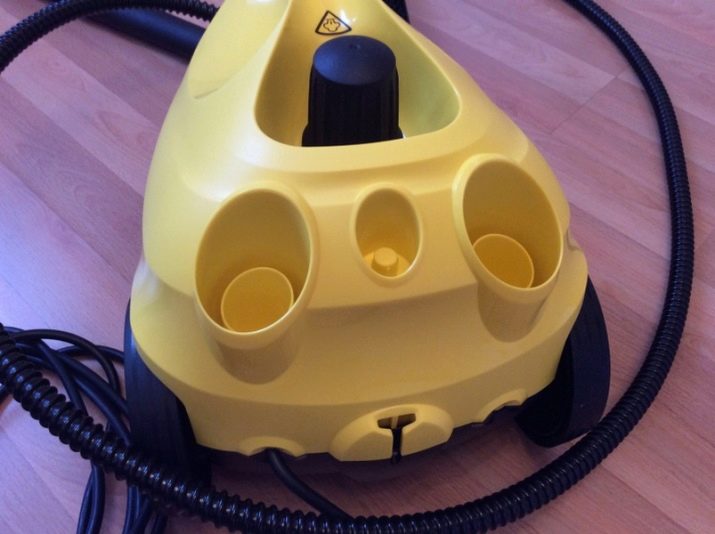
The steamer is an excellent device that will certainly find its place in the everyday life of every family. The choice of the device should be approached very carefully so as not to encounter difficulties in operation. This article is intended to help you at least somewhat understand this issue. It is worth following the rules and safety precautions when using the steamer: it can be very traumatic.
For instructions on how to descale your steamer, see the next video.







